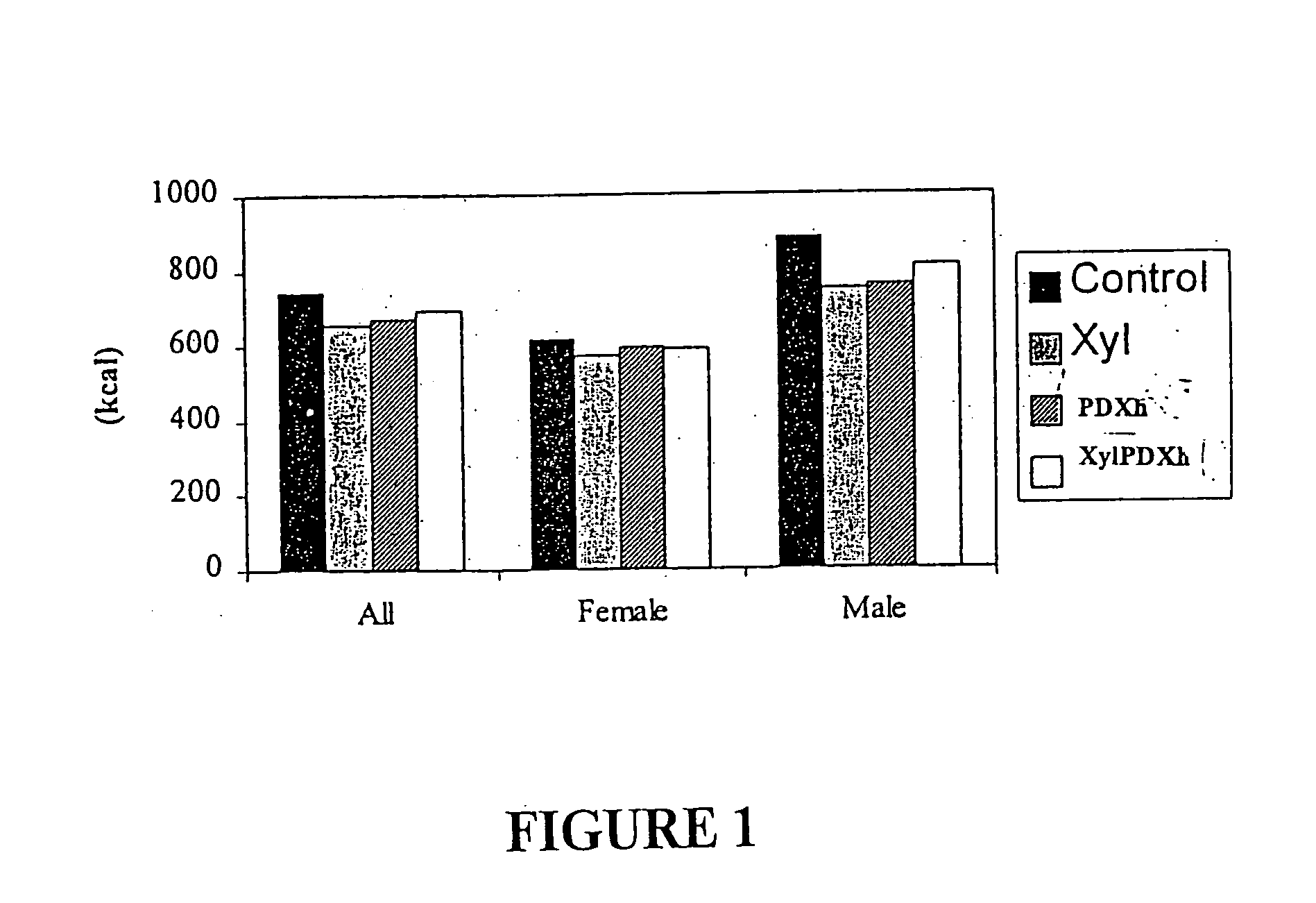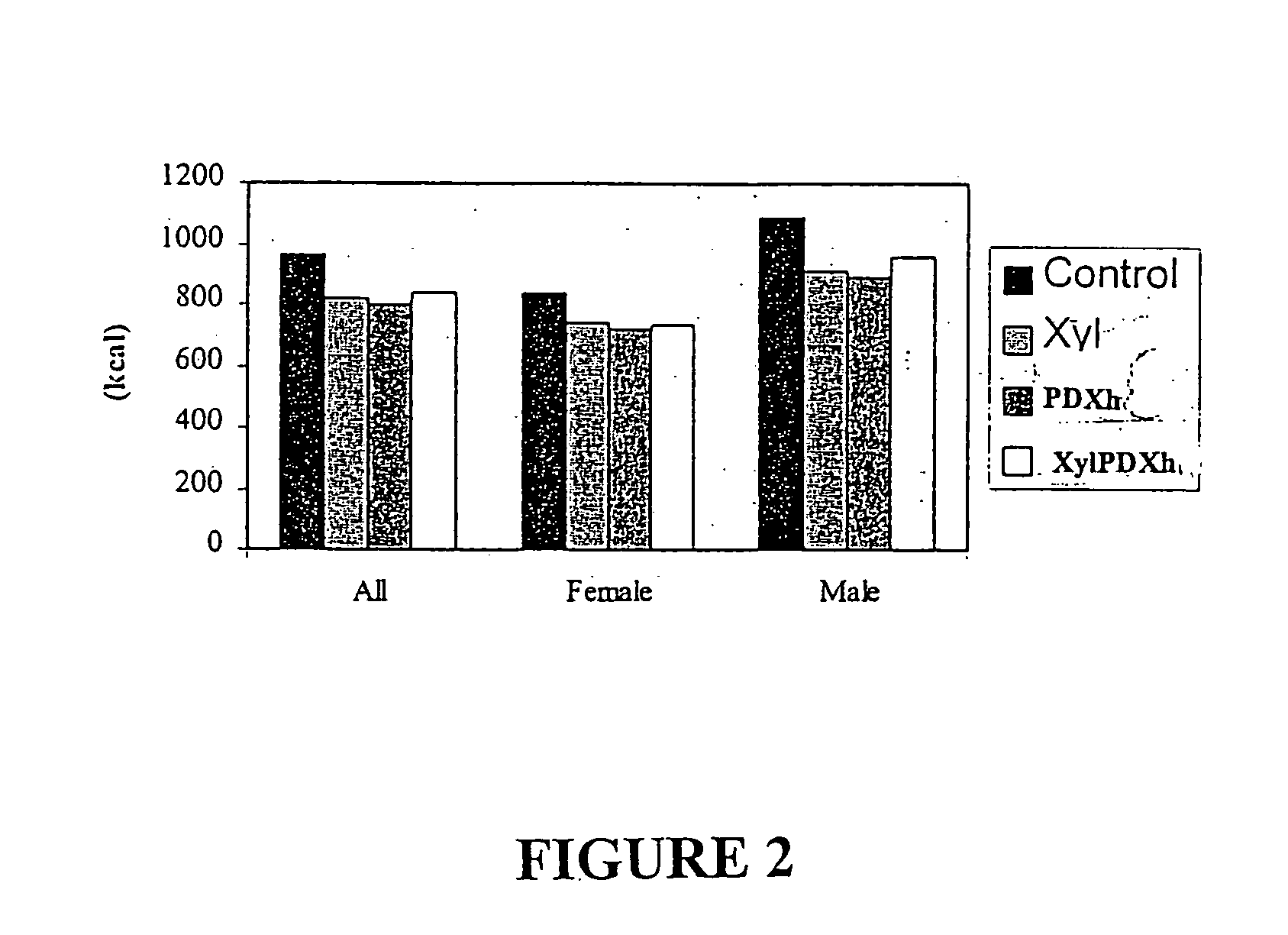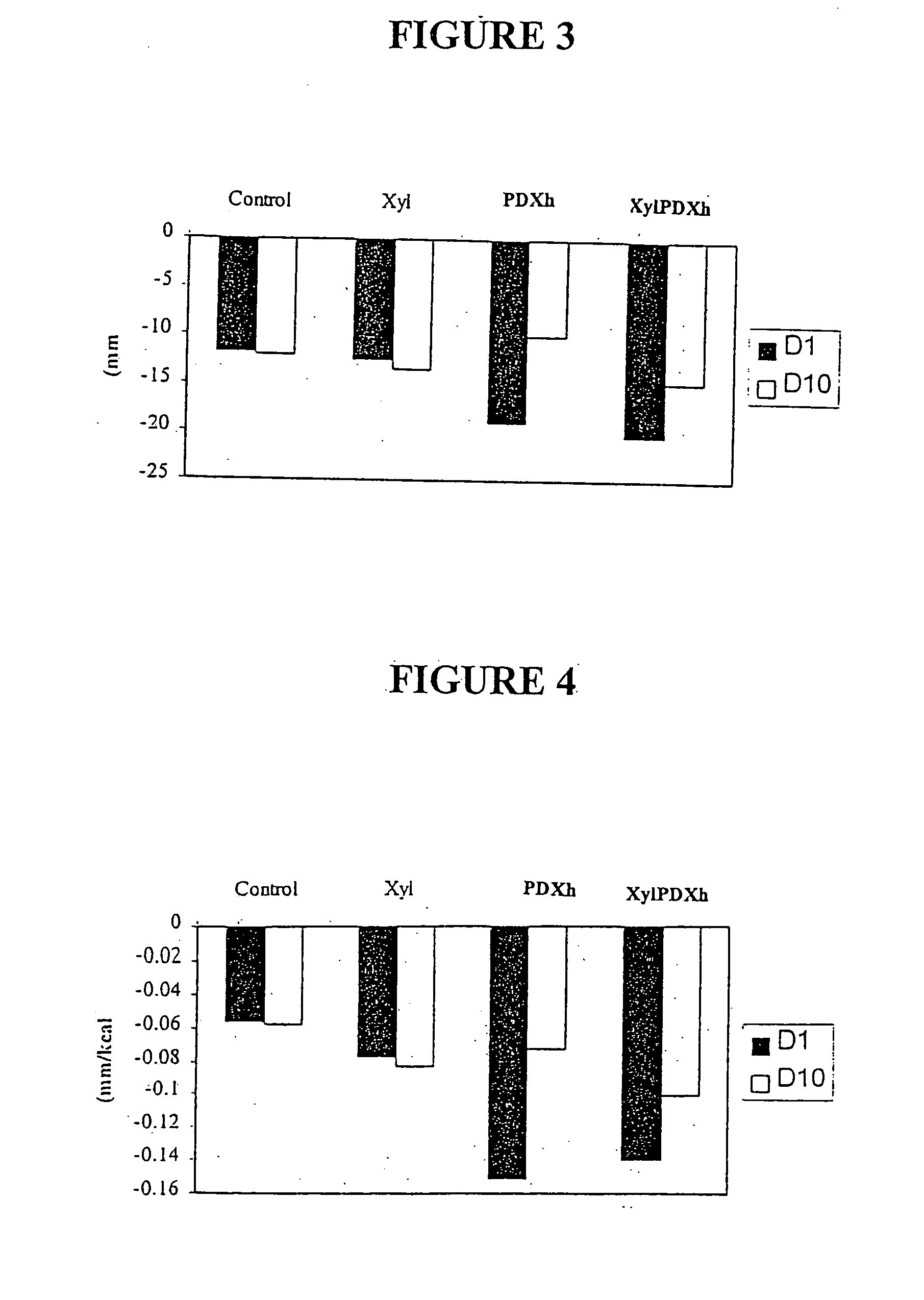Bulking agents as satiety agents
a technology of satiety agent and bulking agent, which is applied in the direction of biocide, drug composition, metabolic disorder, etc., can solve the problems of health risk, type of degenerative disease, negative weight-related impact on mortality,
- Summary
- Abstract
- Description
- Claims
- Application Information
AI Technical Summary
Benefits of technology
Problems solved by technology
Method used
Image
Examples
example 1
Eight female and seven male subjects with mean ages ranging from about 29.5 to 30.7 yr. were used in the study. They were lean (having BMI of 21.6 Kg / m2-23.8 Kg / m2), and they exercised between 2-3 times per week.
There were four experimental conditions that all subjects completed in a counterbalanced order with each condition separated by a one-week washout period. During each experimental condition, subjects were provided with either control or test yoghurts to consume as part of their normal diet for 10 consecutive days. The four experimental conditions differed according to the type of carbohydrate added to the yoghurt consumed: Cont (Control)—25 g / day of sucrose Xyl (Xylitol)—25 g / day of xylitol XylPDXh (Xylitol Polydextrose) Mixture—12.5 g / day of h-polydextrose and 12.5 g / day of Xylitol PDXh (Polydextrose)—25 g / day of h-Polydextrose
Volunteers were required to consume one portion (200 g) of yoghurt on each of the 10 days. Therefore, energy content of the yoghurts varied ...
example 2
The procedure of Example 1 was repeated except that the yoghurt containing the xylitol, h-polydextrose and the 1:1 mixture by weight of xylitol and h-polydextrose were given at breakfast at 8:30 am, i.e., four hours prior to the test meal at 12:30 p.m.
Results
In general, there was an increase in satiety observed at the test lunch 4 hours following consumption of the experimental yoghurts, i.e., yogurts containing either xylitol, h-polydextrose or 1:1 mixture of xylitol and h-polydextrose, relative to the control. The suppressive effects were not diminished by repeated exposure over the ten days. However, the suppressive effect overall with respect to all volunteers was greater (7-15% reduction) when the preload was taken 60-90 minutes before the test meal than when it was taken together with breakfast 4 hours before the test meal (˜3-4% reduction). Nevertheless; when the caloric contribution of the yoghurt was accounted for., the suppressive effect for all volunteers was (5-8%). ...
PUM
| Property | Measurement | Unit |
|---|---|---|
| time period | aaaaa | aaaaa |
| time | aaaaa | aaaaa |
| time period | aaaaa | aaaaa |
Abstract
Description
Claims
Application Information
 Login to View More
Login to View More - R&D
- Intellectual Property
- Life Sciences
- Materials
- Tech Scout
- Unparalleled Data Quality
- Higher Quality Content
- 60% Fewer Hallucinations
Browse by: Latest US Patents, China's latest patents, Technical Efficacy Thesaurus, Application Domain, Technology Topic, Popular Technical Reports.
© 2025 PatSnap. All rights reserved.Legal|Privacy policy|Modern Slavery Act Transparency Statement|Sitemap|About US| Contact US: help@patsnap.com



